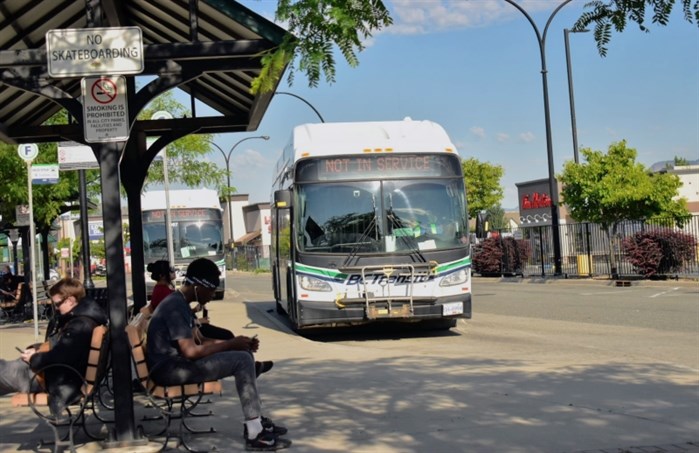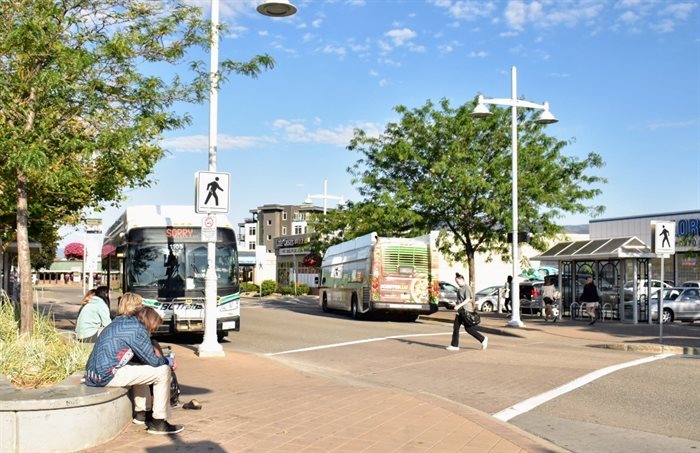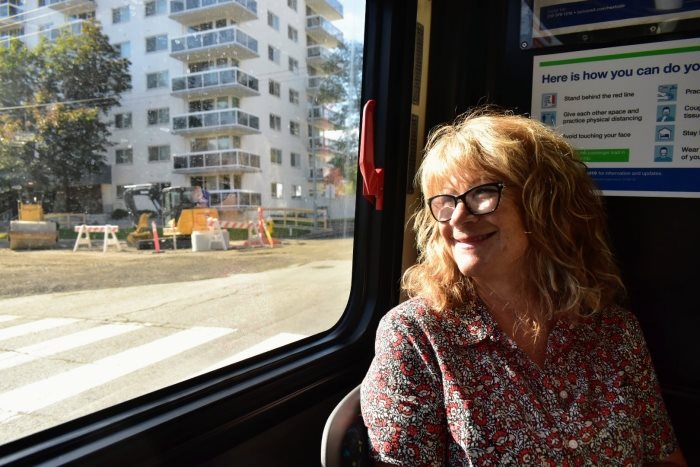iN PERSPECTIVE: Riding the bus in Kamloops saves money but comes with a price

Relying on the bus system in Kamloops requires patience, and sometimes a plan B, in a city that still relies heavily on cars.
Regular bus riders already know they have to be flexible if they’re relying on city busses, and depending on your route, a ride might come by your stop every 15 minutes, every hour or just not show up at all.
I rode the bus, or tried, on and off for about two months, taking it to run errands and interview both riders and drivers.
When Kamloops city council talked about drastically reducing parking requirements for new multi-family housing, I spoke to Councillor Arjun Singh — from his car — as he offered transit as a solution. He admitted he rarely if ever uses it and neither have I. So my editor assigned me the task of testing the transit system to see if it's indeed a substitute in this city.
We wanted to know if Kamloops, a city at the intersection of four major highway routes and made up largely of sprawling subdivisions, is ready to phase out vehicles.
In the past two months, I’ve watched my bus driver pass my bus stop without stopping, missed busses because of last-minute chores or forgetting my bus pass, and been kicked off one bus and moved to another because the correct driver missed her departure time. I’ve also found myself surprised that what would normally be a five minute drive became 20 minutes on the bus.
Almost every rider I spoke with said they’ve had busses arrive up to a half-hour late at times, some don’t bother checking the Transit App or Google Maps because they don’t trust it. Some complained, while others accepted drivers can make mistakes, too. They choose to be patient.
Alfonso Betancourt has been relying on the bus for three years as a university student, but he primarily uses it for work in the summer. It’s not uncommon for him to show up to work late because of delays.
“It’s nothing crazy,” he said. “Sometimes a half-hour or so.”
B.C. Transit should “work harder” to get more drivers and improve the transit system, Betancourt said.
It’s a problem drivers acknowledge, too.
“We can’t get people to come and work here,” one driver said.
There are constant detours and sometimes cancellations on certain routes.
“The Kamloops Transit System is currently experiencing a driver shortage, and this may impact some routes and services,” a notice reads on the B.C. Transit website. “B.C. Transit appreciates your patience during this time, and we apologize for any inconvenience potential service disruptions may cause.”
Along with inconsistent service, one driver told iNFOnews.ca he had to stop mid-route earlier this month when a rider dropped a white powder on the floor.
“I didn’t know what the powder was in the mirror. It was probably cocaine, but I had to get a bus exchange because I couldn’t let my riders walk in that,” the driver said.
Riders got off and he swapped busses at the garage.
“That had to be treated like a hazmat thing,” he said. “It set me back an hour on my lunch break that I didn’t get because of it.”
Besides his missed break, it set commuters back.
“Then you’re running late and passengers will chew you out,” he said.
Betancourt moved to Kamloops from Mexico and despite his complaints, he prefers the system in Kamloops over the breakdowns and inconsistency of the transit system there. That’s not enough for him to stick with it, though, since he’s been saving up for a new car.
He prefers the freedom of driving himself.
But when the cost of gas is more than $2 per litre, combined with insurance and other car payments, some commuters might find the headaches a small price to pay for a $50 monthly bus pass.
A rider on a July Friday morning said she had only been riding for a month to escape the cost of driving her car.
“I figured it out roughly. Over the summertime, I’ll probably save about two grand,” Sarah said. She was riding from the North Shore bus loop to downtown so she could get to work at Royal Inland Hospital.
After speaking with other riders during her first month commuting, she said several others told her the same thing – they’re escaping the high costs of driving in favour of a $50 bus pass.
Whenever I took a bus downtown, to the North Shore or toward TRU, I’ve found there’s often more than one route to get there and they’ll come around every 15 minutes to a half-hour, depending on the time of day.
Twelve of the city’s 14 routes converge at either the downtown or North Shore exchanges. Most riders will pass through the two hubs and can get to most areas of Kamloops, except for Mission Flats. Other suburban areas, like Dufferin, Dallas and Aberdeen will walk farther than someone downtown or on the North Shore would need.
Living downtown, it’s easy to find a route that gets me to other core areas of the city. If a rider needs to get across the city from one of Kamloops’s sprawling suburban neighbourhoods, it’s not so easy.
Another rider named Ryan extended his work commute by almost two hours to get to work from Dallas. If he misses the 6:30 bus, he has to wait another hour before another one shows up.
From the downtown bus loop, he takes a second bus to get to work every day since losing his license in March. It’s been a tough adjustment.
“Especially because I have a three-year-old kid, too. It makes it a lot more difficult,” he said.
While Betancourt, Ryan and Sarah all have reasons to stick to the bus, rather than drive, I have the privilege of driving when a bus is inconvenient.
While waiting at the bus stop to go grocery shopping on July 6, I watched the bus I was waiting for drive past me.
It was 8:40 p.m. and the next bus would have been another 53 minutes, according to the Transit app. My other option was a ten minute walk for another bus that wouldn’t arrive until 9:10 p.m.
I drove instead and arrived at the grocery store within five minutes.
Evening bus routes wouldn’t work with my schedule and bike lanes are sparse. Cycling isn't considered by many to be an option because of steep hills and dangerous routes.
If I missed a bus, it was easy to drive to my destination and traffic congestion is rarely an issue.
Kamloops is clearly a car-centric city, but as gas prices stay close to $2 per litre, I could find myself picking up a $50 bus pass, too.
Or, I’ll take notes from Teresa Smith.
Smith is a grandmother and getting close to 70, she said. I met her at the downtown bus exchange after she dropped her car off for some repairs.
“When I did work, I would take the bus occasionally,” she said. “Then when my grandchildren arrived, I would take them on bus rides and I used it as a learning tool.”
She’d take them for rides for an activity while babysitting and it teaches them “how to be polite,” she said.
Smith lives in Sahali, so when riding on her own, it’s convenient to walk downhill to go grocery shopping, but she’ll ride the bus up since it’s nearly impossible to avoid steep inclines.
Like me, she found learning the routes took time. After a few weeks, I started to learn which routes show up where and when. At first, it can be confusing, and the Transit app or Google Maps are more of a helpful guideline than precise measurements as intended.
Smith only rides occasionally, so late or missed busses aren’t much of a concern for her, but it seems to happen when it’s least convenient.
“Like Murphy’s Law, it happens when you really need to get somewhere quickly,” she said.
To contact a reporter for this story, email Levi Landry or call 250-819-3723 or email the editor. You can also submit photos, videos or news tips to the newsroom and be entered to win a monthly prize draw.
We welcome your comments and opinions on our stories but play nice. We won't censor or delete comments unless they contain off-topic statements or links, unnecessary vulgarity, false facts, spam or obviously fake profiles. If you have any concerns about what you see in comments, email the editor in the link above.





